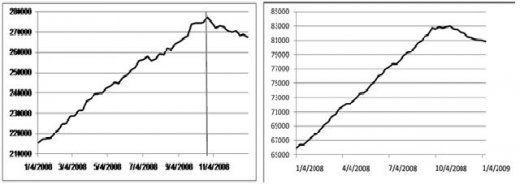Two years lost
I know that my recent columns are depressing, but so is the current situation not only in Turkey but throughout the world. The additional depressing factor in case of Turkey is that no comprehensive economic program is announced yet. Some individual precautionary measures have been introduced and the Central Bank have announced some relieving decisions; however, it is not sufficient as the measures announced by some other countries are considered. And this situation, normally, is forcing me to write more depressing columns.
It is doubtless that we can get out of this depressed mood. Economic indicators will not hit the bottom forever if relevant actions are taken. On the other hand, we have to realize something:
We should not be expecting that economy will recover in a short period of time, time is needed. And this is the real reason behind the reactions against the delay in taking action.
We have to write and explain the situation we are going under as well as offering resolution advisories so as to make a contribution to end the delay. I have written several columns offering this type of resolution advisories. However, whether the expectation for bitter situation, which led to the development of such advisories much earlier, were realistic or not was not reflected in the indicators. But, how, indicators stated to reflect the bitterness of the 'situation'.
In my last commentary, I presented figures indicating that external credits are beginning to be exhausted as expected. The problem has been deepening since September. Currently, Turkish banks are net external loan debtors. Turkish companies are not obtaining new external funding sources, the amount they obtain goes to the repayment of existing loans.
Today, I will examine the movement in the credits offered by the banking sector. There are two graphs below. First one gives the weekly movement of the amount total credits offered by the banks to the corporate sector and consumers. The last data shown is that of the beginning of January. The second graph shows data for consumer loans. And the last data seen for consumer loans is for January 9th.
The vertical line in both graphs represents the peak level of credits offered. For total credits, the peak date is October 24, 2008. As per that date, the level of credits granted fall in nominal terms.
The fall in the amount of total credits stands around 3.5 percent. Let me remind you that figures represent the movement within the last 10 weeks.
In case of consumer loans, there is a horizontal movement from the end of September to the beginning of October and then a downfall. This is why I posited the vertical line in the starting point of the movement. However, the real peak is achieved in the end of October and since then, amount of consumer loans diminished by 2.5 percent.
In short, in the light of current data, 1 percent contraction estimated for 2009 seems to be an optimistic estimation. In other words, the average of the growth in 2008 and that in 2009 for Turkey might be negative. It is unfortunate, but true.

Graph 1: Deposit banks, Total credits (January 4, 2008 - January 2, 2009, million TL)
Graph 2: Deposit banks, Consumer loans (January 4, 2008 - January 9, 2009, million TL)
This commentary was published in Radikal daily on 18.01.2009




